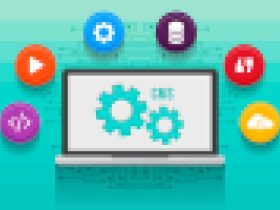In today’s world, accessibility and inclusivity are crucial aspects of education. Every student, regardless of their abilities or disabilities, deserves equal opportunities to learn and thrive. Ethical investments play a vital role in making educational accessibility a reality. Through strategic partnerships, innovative solutions, and a commitment to inclusivity, these investments have the power to transform the lives of students with disabilities. In this article, we will explore a series of case studies that demonstrate the success stories of ethical investments in educational accessibility.
Case Study 1: The Accessible Learning Initiative
The Accessible Learning Initiative (ALI) is a nonprofit organization that has made significant strides in improving educational accessibility for students with disabilities in underprivileged communities. ALI recognizes that physical barriers can hinder access to education, so they have partnered with local schools to invest in the development of accessible infrastructure. These investments include the construction of ramps, elevators, and accessible restrooms, ensuring that students with mobility challenges can navigate their school environment with ease.
However, ALI’s commitment to accessibility goes beyond physical infrastructure. They understand that technology can be a powerful tool for inclusive education. Through ethical investments, ALI has provided funding for assistive technologies such as screen readers, Braille devices, and adaptive software. These technologies enable students with visual impairments to access educational resources and participate fully in the learning process. As a result of these investments, the participating schools have witnessed an increase in enrollment of students with disabilities and improved academic outcomes for these students.
Case Study 2: Inclusive Curriculum Development Project
The Inclusive Curriculum Development Project (ICDP) is another success story that showcases the impact of ethical investments in educational accessibility. This initiative, supported by a group of socially responsible investors, aims to develop inclusive curriculum materials that cater to the diverse learning needs of students with disabilities.
ICDP understands that a one-size-fits-all approach to education is not effective for students with disabilities. Through collaborations with educators, curriculum specialists, and disability advocates, ICDP has created a range of accessible learning resources. These resources include textbooks, digital content, and interactive learning tools that accommodate different learning styles and abilities.

Ethical investments have played a crucial role in developing and disseminating these inclusive curriculum materials. These investments have allowed ICDP to conduct research, hire experts, and produce high-quality educational resources. As a result, students with disabilities have access to learning materials that are tailored to their needs, leading to improved academic performance and increased participation in classroom activities.
Case Study 3: Technology for Inclusive Education
Technology can revolutionize education and make it more inclusive for students with disabilities. A technology company, committed to ethical investments, has recognized this potential and has developed a range of innovative solutions to promote inclusive education.
Through partnerships with educational institutions, this company has invested in the development of accessible learning platforms and applications. These technologies provide personalized learning experiences, adaptive assessments, and real-time feedback to students with disabilities. The investments have also supported the training of teachers in utilizing these technologies effectively.
By leveraging technology, students with disabilities can overcome barriers and access educational resources that were previously inaccessible to them. These investments have resulted in increased confidence, improved academic performance, and a sense of belonging in the classroom for students with disabilities.
Case Study 4: Scholarships for Students with Disabilities
Financial barriers should never hinder a student’s access to education. A philanthropic foundation has recognized this and has dedicated a portion of its funds to providing scholarships for students with disabilities. These scholarships cover tuition fees, assistive technologies, and other educational expenses.
By investing in the education of students with disabilities, this foundation aims to empower them to pursue higher education and achieve their career aspirations. The scholarships not only provide financial support but also serve as a recognition of the potential and abilities of these students.
The foundation regularly monitors the progress and achievements of the scholarship recipients, ensuring that the investments are making a meaningful impact on their educational journey. By investing in scholarships, this foundation is breaking down financial barriers and creating opportunities for students with disabilities to thrive academically.
Case Study 5: Accessible Learning Spaces
Creating inclusive learning environments is essential for educational accessibility. A real estate development company has taken a unique approach to ethical investments by focusing on the construction and renovation of educational facilities to ensure they are fully accessible to students with disabilities.
These investments include the installation of ramps, elevators, accessible washrooms, and sensory-friendly spaces. The company has collaborated with architects and designers to create learning environments that cater to the diverse needs of students. By prioritizing accessibility in their construction projects, the company has set a precedent for other developers and has contributed to the creation of inclusive educational spaces in the community.
Accessible learning spaces not only remove physical barriers but also foster a sense of inclusivity and belonging for students with disabilities. These investments have created environments where students can learn, interact, and thrive without limitations.
In conclusion, these case studies demonstrate the positive impact of ethical investments in educational accessibility. Through partnerships, innovative solutions, and a commitment to inclusivity, these investments have transformed the educational landscape for students with disabilities. By removing physical barriers, providing assistive technologies, developing inclusive curriculum materials, and offering scholarships, these investments have opened doors and created opportunities for students who may have otherwise been excluded from quality education.
Moreover, these success stories highlight the importance of technology in promoting inclusive education. By leveraging technology, students with disabilities can access personalized learning experiences, adaptive assessments, and real-time feedback, ultimately enhancing their academic performance and sense of belonging in the classroom.
Ethical investments in educational accessibility not only benefit students with disabilities but also contribute to building a more inclusive and equitable society. By prioritizing accessibility and inclusivity in educational initiatives, we can ensure that every student has equal opportunities to learn, grow, and succeed.
Conclusion
In conclusion, ethical investments in educational accessibility have the power to transform the lives of students with disabilities. Through strategic partnerships, innovative solutions, and a commitment to inclusivity, these investments remove barriers, provide necessary resources, and create opportunities for students to thrive academically. By continuing to prioritize and support ethical investments in educational accessibility, we can build a more inclusive and equitable society where every student has equal access to quality education.

































